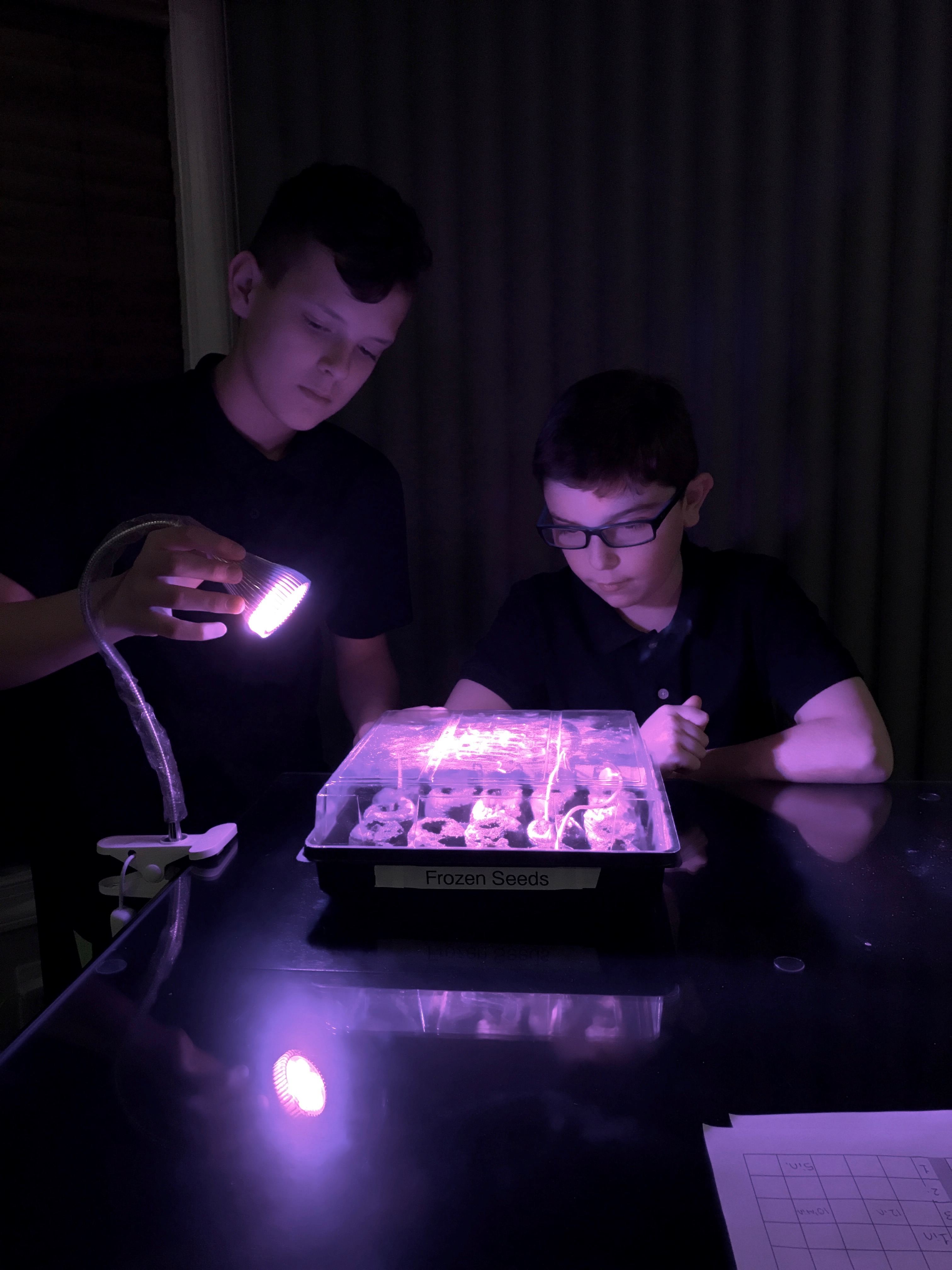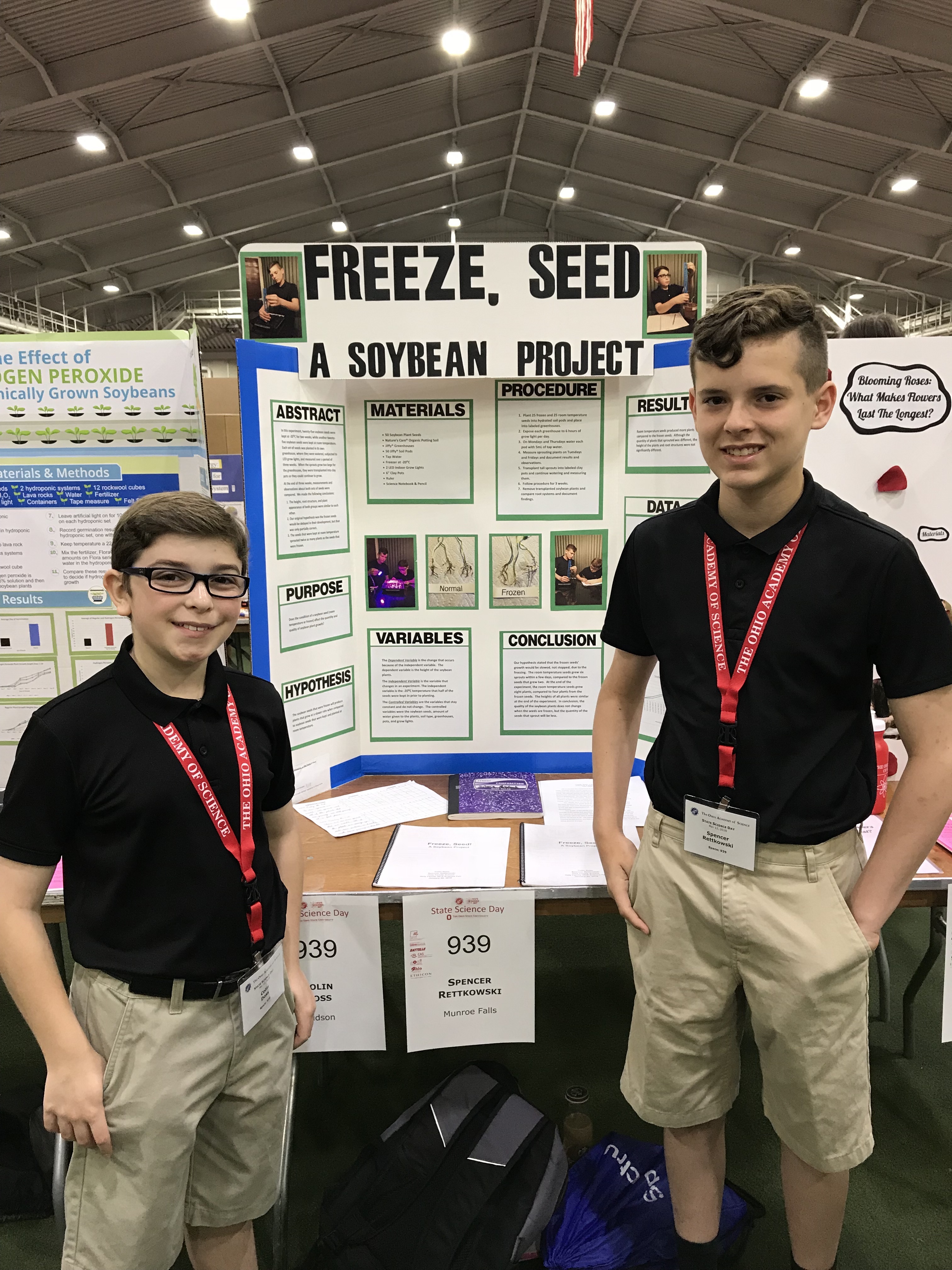Freeze Seed
Does the condition of a soybean seed (room temperature or frozen) affect the quantity and quality of soybean plant growth?
Supervising teacher
Stephanie Collins
Student
Colin Doss and Spencer Rettkowski
School
Holy Family School
Supporting files
science-fair-2018.docx
For this experiment, we conducted a trial to find out what would happen if we grew seeds that were frozen versus seeds that were left at room temperature. Our hypothesis was that the frozen seeds would grow at a slower pace than the normal seeds. To conduct this experiment, we planted twenty-five frozen seeds into twenty-five soil pods in one greenhouse. We took twenty-five room temperature seeds and planted them in twenty-five soil pods in a second greenhouse. After that, we exposed both greenhouses to six hours of LED grow light each day.

Every Monday and Thursday, we fed them five milliliters of water, and every Tuesday and Friday, we measured the plants’ height in inches, and documented the measurements and appearance of the plants. We conducted this experiment over three weeks.
We discovered that our results were not too far off from what our hypothesis stated. The room temperature seeds grew six sprouts within a few days. Meanwhile, the frozen ones only grew two sprouts within the same amount of time. On the last day of taking measurements, we discovered that two of the room temperature seeds and two of the frozen seeds had both just sprouted. The new plants were measured and documented, as well. The data that we collected can be found in the ‘Data and Graphs’ section of this report.
The quality of the frozen seed plants was not very different from the room temperature plants, although the quantity of the seeds that sprouted was two-thirds less for the majority of the experiment. Therefore, our hypothesis was only partially correct. We found out that the cold temperature does not significantly affect the size or speed of the growth, rather, it affects the chance that they will sprout at all. This project taught us that farmers can use the seeds that were left in the freezing temperatures, but they will have to plant more of them if they want the same amount of crops that would grow in a normal year.
